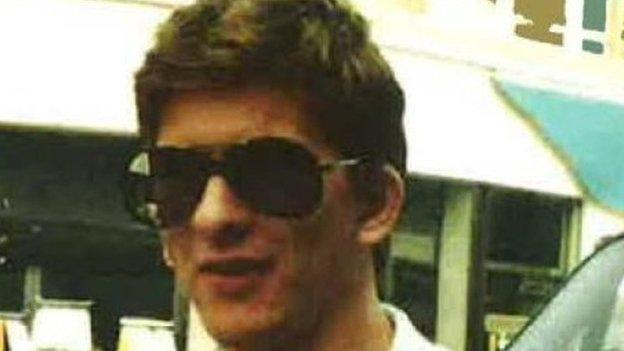Hillsborough Inquests: PC believed he 'failed' victim David Birtle
- Published
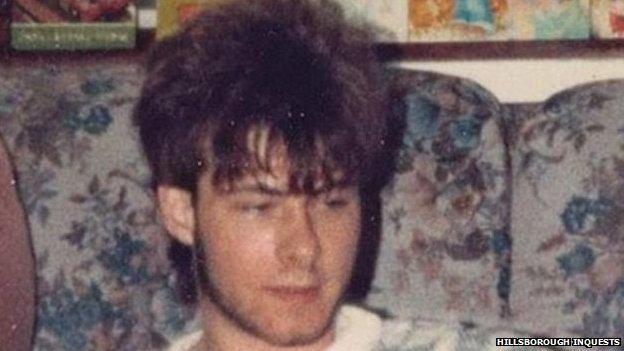
David Birtle, from Cannock, was an "ardent" Liverpool supporter
One of the victims of the Hillsborough disaster was seen moving and apparently alive two minutes after the match was stopped, the inquests have heard.
The jury heard how PC Kevin Hanson appeared to believe he had somehow "failed" David Birtle on 15 April 1989.
But Mr Birtle's family told the police officer they were "extremely grateful" for his "determined efforts" to save the 22-year-old's life.
He was one of 96 fans fatally crushed at the FA Cup semi-final in Sheffield.
Mr Birtle, from Cannock, Staffordshire, was described as an "ardent" Liverpool supporter who had driven to Sheffield for his side's tie against Nottingham Forest.
In footage shown to the jury and timed between 15:07 and 15:08 BST, Mr Birtle was seen towards the front of terrace pen three, one of the enclosures behind the Leppings Lane end goal.
'No movement'
He was moving and appeared to still be alive.
Steven Thompson, another constable on duty that afternoon, is believed to have tried to resuscitate Mr Birtle inside the pen between 15 and 20 minutes later.
He said there was "no movement". Despite thinking he was dead, he started to perform mouth-to-mouth.
After "several minutes" a colleague told him "something along the lines of 'you're wasting your time'" and he moved on to help others.
Mr Birtle was moved from the Leppings Lane end to the Spion Kop end opposite where two officers, including PC Hanson, again tried to resuscitate him.
They stopped after a woman who said she was a staff nurse told them "he's dead, he's gone".
Stephen Simblet, a barrister representing Mr Birtle's family, said from looking at Mr Hanson's statement it appeared as if he believed he had "failed" the Liverpool fan.
Mr Simblet said the Birtle family did not think the same.
He said: "They're extremely grateful for the determined efforts that you made to save his life."
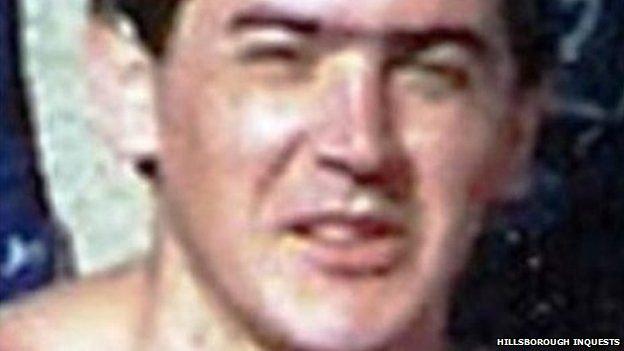
Police officers tried to revive Steven Brown on the pitch
The inquests also heard from Andrew Brown, who lost his brother Steven Brown in the disaster.
Mr Brown described losing sight of his 25-year-old sibling as he tried to stay on his feet in the crush.
Steven Brown's wife Sarah previously told the inquests the match was the first away game he had been to for more than two years.
The jury saw footage of the brothers going through the Leppings Lane turnstiles at about 14:10.
Andrew Brown told the court they were on the terraces between 14:15 and 14:20.
He said the terraces started to get more full from 14:30. He said it was "bearable" for the next 10 minutes or so before it became "packed and there was no movement".
In a statement, Mr Brown said there was a surge from behind which kept pushing him forward, and he lost sight of his brother.
Asked about that in court, Mr Brown said: "I could see Steven up until about four or three minutes to kick-off. Then it was basically just try and keep on your feet."
Mr Brown said his brother "looked ok" the last time he saw him but he may also have been "a bit concerned".
After the crush, Mr Brown said he returned to their car to look for his brother. When he did not appear, he reported Steven missing.
He identified his brother's body later that evening.
He said: "I was then led to a table and interviewed by a police officer and Mr Graham Kelly from the FA and I made a statement to them.
"It seemed at the time all they were concerned about was basically how much alcohol we'd had to drink."
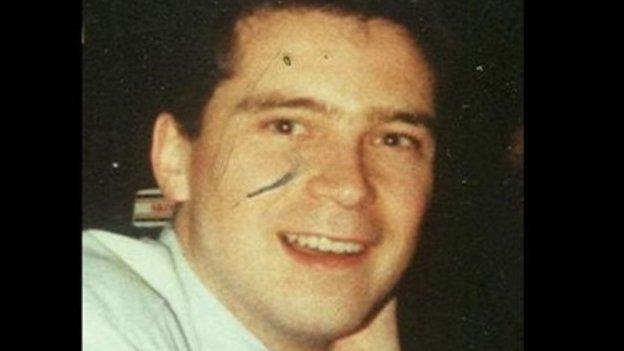
Alan Johnston had travelled to the match on a minibus with friends, all of whom survived
The jury also heard about the final movements of Alan Johnston.
The 29-year-old trainee accountant had been planning to marry in the summer of 1989, the court heard.
He had travelled to the match on a minibus with friends, all of whom survived.
It is thought they arrived outside the ground at about 14:30. The jury heard there was no evidence about Mr Johnston going into the pens or leaving the terraces after the crush.
Two constables, Nigel Reeves and Steven Royle, gave evidence about how they helped carry him from the Leppings Lane end to the stadium's gymnasium, which was being used to store bodies.
The inquests, being held in Warrington, Cheshire, are due to resume next week.

Who were the 96 victims?
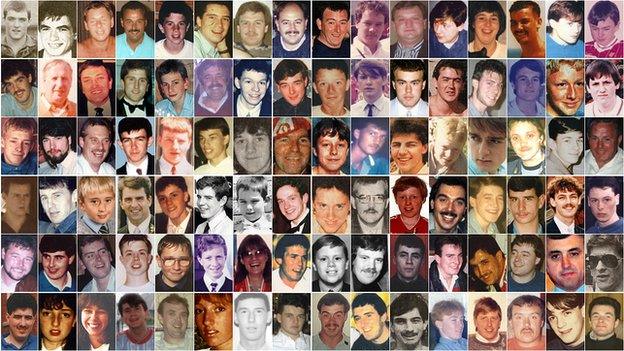
BBC News: Profiles of all those who died

- Published14 April 2014
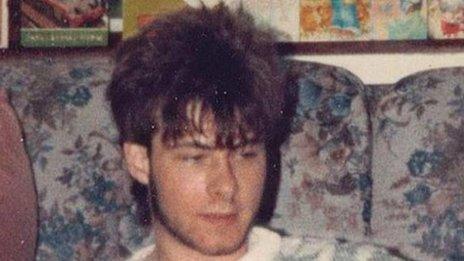
- Published8 April 2014

- Published1 May 2014
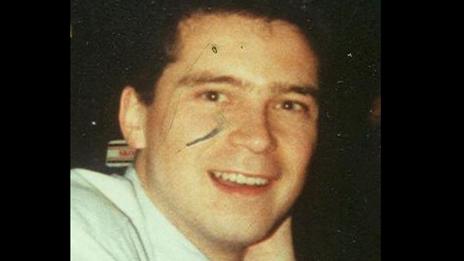
- Published14 July 2015
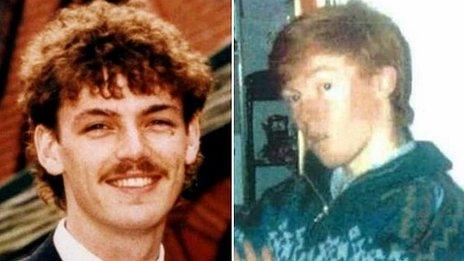
- Published7 July 2015
